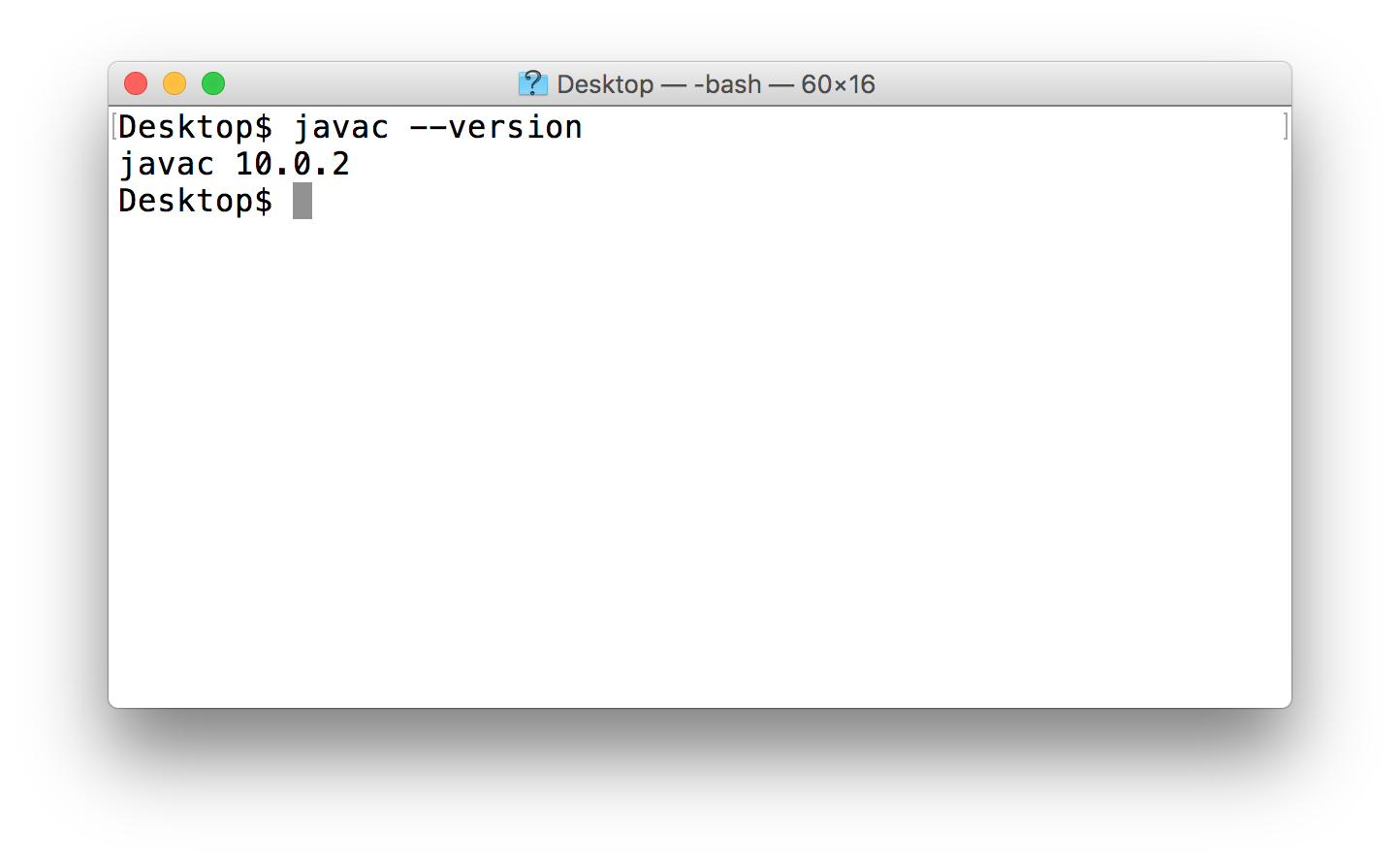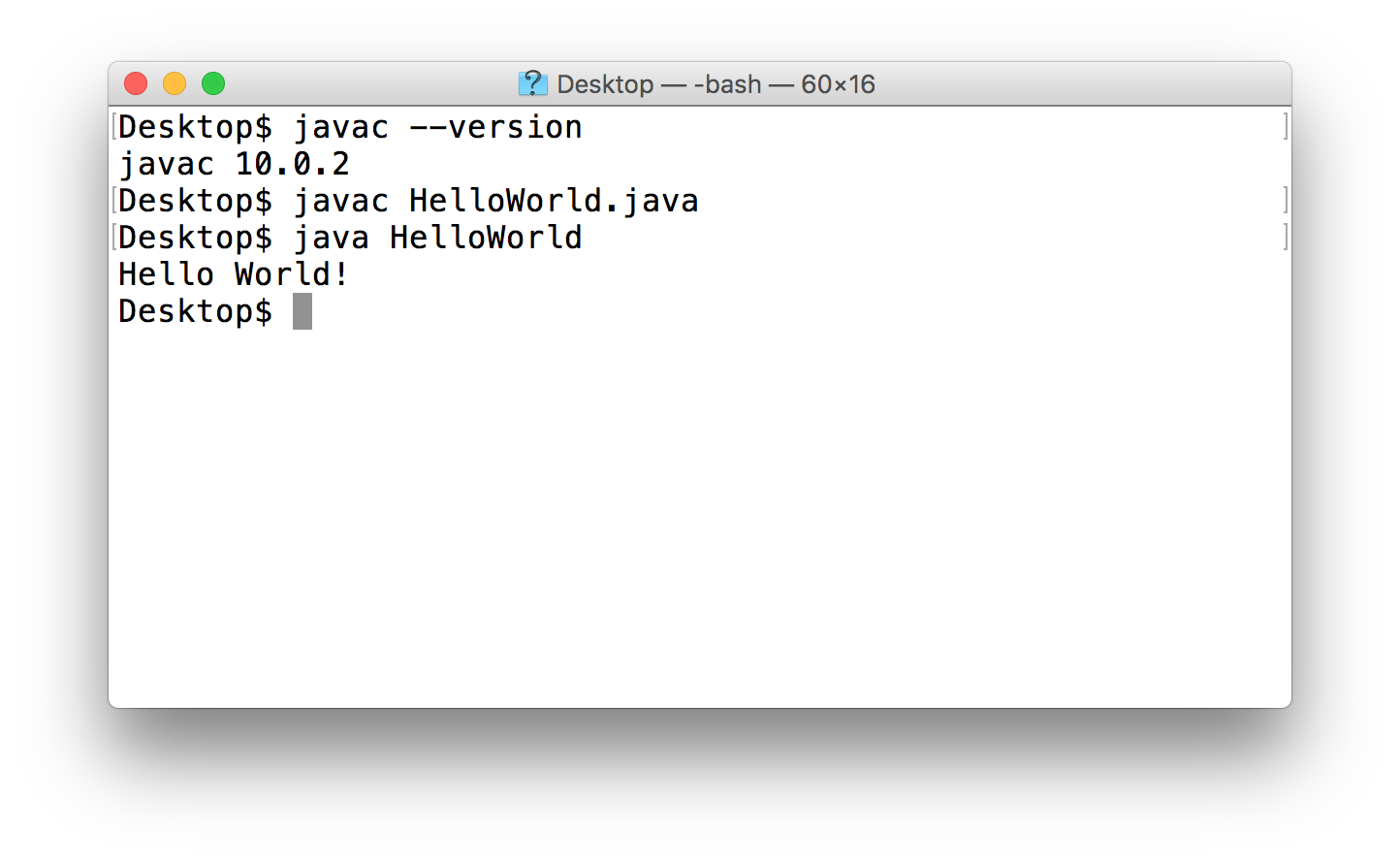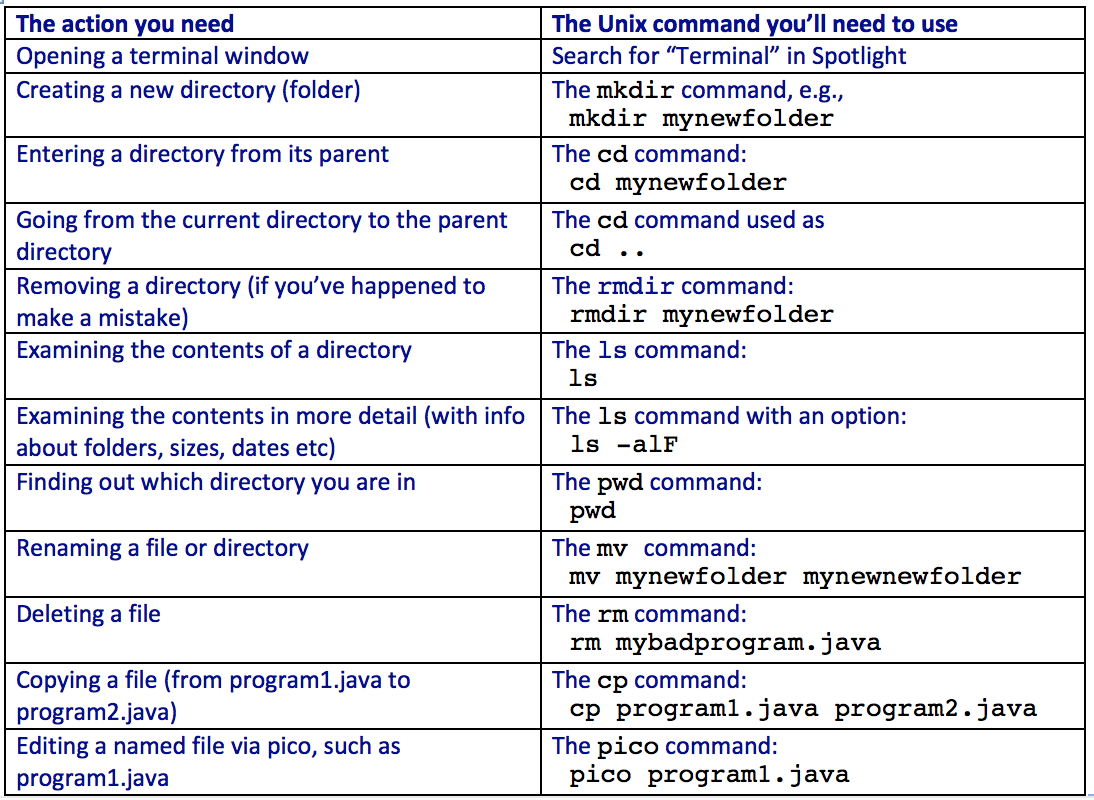- Open a terminal window.
- In the terminal window, make sure you have Java installed by typing:
javac --version
and hit return. You should see something like:
In your case, the version number may be different. That's fine, as long as it's 6.0 or higher. (You'll need to re-install the JDK if it's a lower version.)
- Make a directory for this course and enter that directory:
cd cd Desktop mkdir contalg cd contalg
This creates a subdirectory from the Desktop, as an example. - From your browser (where you are reading this), download HelloWorld.java and save to the new contalg directory.
- Compile and execute in the terminal:
javac HelloWorld.java java HelloWorld
- You should see something like:

(We did this in the Desktop above, you can do this in any directory, such as the contalg directory).
- Spend a little time learning basic commandline Unix on your
own. Find a tutorial and learn how to use the following commands

- (Recommended) Gitbash: Get Unix to work inside Windows using Gitbash.
- Install a complete Linux OS in a virtual machine like VirtualBox. Then, do all your work for this course inside that virtual machine (using Linux). This is have the effect of a "computer inside a computer" in some sense. For this purpose, do a search on something like "How to install Ubuntu inside VirtualBox on Windows".
- Use the remote-Unix facility provided by GW. This gives you a Unix shell account accessible from a browser. See these instructions. You will also need to install the GW VPN client if you use this option from off-campus.